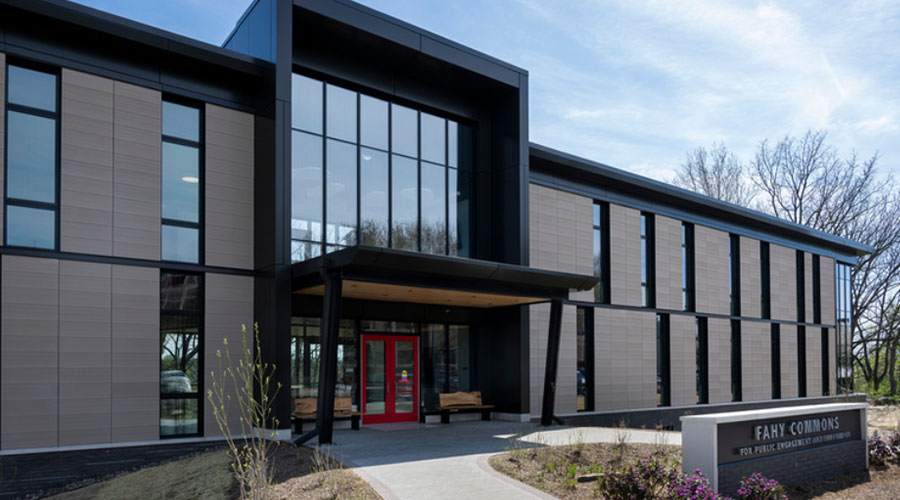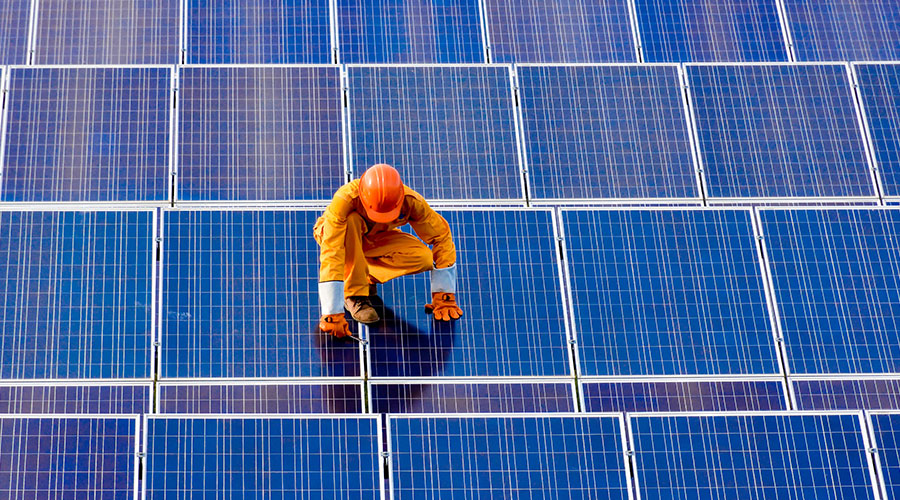Hot Solution: Roof Coatings
Soaring rooftop temperatures provide a challenge for one district, and roof coatings provide both protection and energy savings
Forty-eight million square feet of roof space. Next time you consider the challenge of maintaining your facilities’ roofs, consider the challenge for the maintenance department of the Clark County (Nev.) School District, which includes the city of Las Vegas. That figure is the total square footage of roof space for the district’s 272 schools.
Then, consider these additional facts:
•The district’s schools, 1,600 portable classrooms, and 55 additional buildings feature every conceivable type of roof, though most now are foam.
•The district adds 12-15 new schools annually.
•All of these facilities sit in a hot, sunny climate in which temperatures regularly top 100 degrees.
Now that’s a challenge.
Yet Clark Neilson, the district’s coordinator of general repairs, and Danny Hurd, its roofing supervisor, say they have developed a strategy that not only protects the roofs but also keeps the buildings cool, keeps students and staff comfortable, and controls the district’s energy costs.
It might be hard to believe, but it’s true, and it has nearly everything to do with roof coatings.
Seeking Solutions, Finding Savings
The district’s commitment to roof coatings began in the mid-1990s, when some single-ply roofs began failing prematurely — sometimes only three years after installation.
“The materials were deteriorating and cracking,” Hurd says. “We needed to do something to make them last, something to fix them and give them a longer life.”
District officials were looking for a long-term performance solution, but they also needed immediate financial benefits from any strategy because each reroofing project was costing the district about $1.5 million.
A roof coatings program provided that immediate payback. Applying a coating system cost only $300,000, says Hurd, who spent several years researching options and getting specifications for the most appropriate product.
Since the roof-coating program began, Hurd and the department’s 19-person roofing shop have used one coating that is compatible with all types of roofing systems. The high-tensile coating, teamed with a preparatory patch coat Hurd refers to as “butter,” has proved to be a highly successful combination, and it has allowed the district to minimize its reroofing costs.
Hurd says the coating performs so well and adheres so tightly to roofing system components — from membranes and seams to penetrations and parapets — that it has surpassed expectations, even when the surface preparation isn’t quite right.
In one application, he says, “we didn’t clean the surface right, but it still outperformed our expectations. We can’t get it off.”
Among the coating’s most appealing characteristics is its ability to move with a roof as the system expands and contracts with the region’s fluctuating temperatures, Neilson says.
To illustrate its performance, Hurd cites a problematic roof on one high school, whose principal was continually frustrated over cracks in the roof that led to extensive leaks and water damage. Workers applied two layers of the universal roof coating. The result?
“We haven’t heard from him in eight or nine years,” Neilson says. “There have been no work orders for that roof.”
Focus on Energy
Roof coatings have helped the school district save money two different ways. They have extended the life of roof systems, and they have minimized roof repairs.
But early in the department’s efforts to coat and protect the district’s roofs, managers and officials inside the department and elsewhere in the organization began to take note of the coating’s other chief benefit — holding down rooftop temperatures, leading to lower energy bills, as well as keeping district buildings cooler and more comfortable. And as energy prices have risen sharply, so has the district’s interest in coatings’ ability to curtail energy use.
“They’ve really gone overboard on it in the last few years,” Neilson says, referring to district officials’ pursuit of energy savings. The district even has a separate department devoted to finding energy efficiency in its operations and facilities.
The district now uses a coating that is reflective and light colored.
“A coated roof looks like a pearl,” Hurd says. To illustrate the benefits of the coating’s reflective properties, he describes a test the department performed as it was research coatings early in the program.
Workers applied the roof coating to two portable classrooms and left two others uncoated. Soon, the attic temperature in the uncoated trailers was 165 degrees and climbing. The temperature in the coated portable classrooms remained around 73 degrees.
Hurd adds that on a typical hot day in Las Vegas, when the outside temperature can reach 116 degrees and roof temperatures can top 185 degrees, the district’s coated roofs are far cooler.
“You could lay out on the roof, it’s that cool,” Hurd says.
Preparing for Success
The department obviously pays a great deal of attention to selecting the proper coating and applying it as directed by the manufacturer. But Hurd stresses the importance of surface preparation in producing the desired results.
“Preparation is 90 percent of it, if you want to do it right,” he says.
In addition to using a chemical cleaner, the department uses a machine similar to a floor buffer featuring mechanical arms ¼ inch above the surface that shoot water at 2,000 psi. The goal of the process is to remove every possible bit of dirt from the surface to give the coating the best possible chance to perform.
Hurd says that before applying a coating, workers also inspect every component of the roofing system — with special attention to roof drains — to find and repair small problems so they don’t become bigger problems.
As a complement to this process, the district also is developing a team of workers dedicated to inspecting the district’s 1,100 acres of roofs and keeping them clean. The workers will inspect roofs from damage caused by weather, trades people, and vandals, Neilson says, and they will remove debris such as pine needles from roof surfaces.
The district’s program is evidence that roof coatings can provide a cool solution to today’s energy challenges.
Related Topics:











